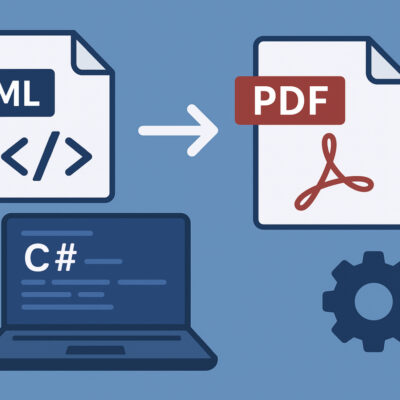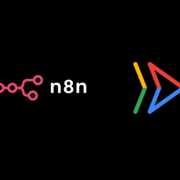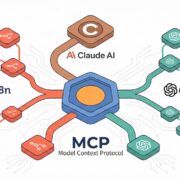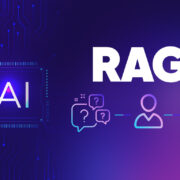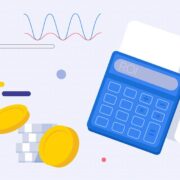Employee accountability thrives when projects are visible. Teams perform best when they understand not only their responsibilities but also how their work fits into the broader picture. Without visibility, ownership blurs—tasks are assumed rather than assigned, deadlines are misunderstood, and progress becomes difficult to measure. Over time, accountability erodes and productivity suffers. This is why organizations increasingly turn to unified project management tools. By providing clear visibility into tasks, data, and progress, these platforms make accountability a natural outcome rather than a forced one.
Lark is designed to strengthen this connection between visibility and accountability. Its features span communication, scheduling, documentation, tasks, and structured data, ensuring that employees see what needs to be done, who owns it, and how it connects to the team’s success. Instead of accountability depending on constant reminders, it becomes built into the workflow itself.
Lark Tasks: making ownership explicit instead of assumed
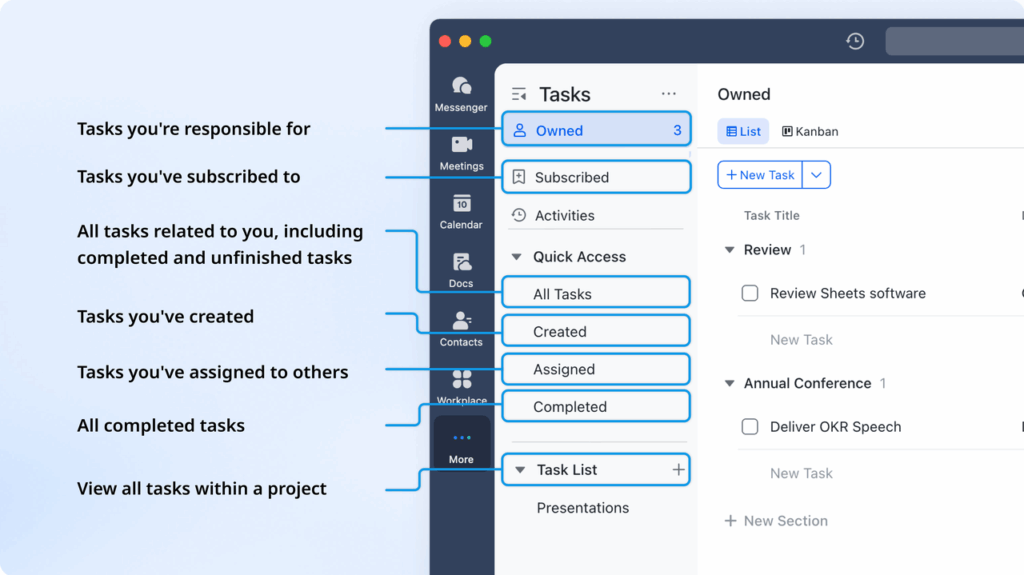
The most basic obstacle to accountability is ambiguity. In many office environments, work is only discussed informally in meetings or chats and then not formally tracked. Absent an explicit owner and clear deadline, responsibility gets muddied and follow-up becomes a continuous community of reminders.
Lark Tasks addresses this by formally embedding accountability. As one chain of Lark ecosystem, not only can tasks be created directly in the Tasks tab, but they are can also be created from discussions in Messenger, Calendar appointments, or a project Doc. Each task has a visible owner, a clear due date, and a visible status. Visibility around the task is clear and unambiguous from the outset. Since Tasks tracks progress automatically and reflects that progress on dashboards, both managers and employees can have confidence that work is being moved forward. Ownership must always be visible, and Tasks embeds that visibility into everyday workflow.
Lark Calendar: aligning deadlines with shared visibility
Accountability also breaks down when deadlines exist in isolation. If only a manager knows the timeline, employees may inadvertently misprioritize their work. Missed milestones then create frustration rather than collective responsibility.
Lark Calendar addresses this by integrating deadlines into a shared view. Task due dates flow into calendars automatically, while project milestones appear across teams. Employees don’t just see their own commitments; they see how their deadlines align with others. This visibility reduces surprises and fosters accountability, because teams understand the consequences of delays. Instead of accountability being enforced from the top down, Calendar builds it into the shared rhythm of work.
Lark Base: ensuring reliable visibility through connected workflows
Another challenge for accountability is unreliable data. When different teams track projects in separate spreadsheets or tools, no one is quite sure which numbers are accurate. This lack of a shared source of truth erodes accountability because employees can always point to conflicting information.
Lark Base solves this by centralizing structured workflows into a single database. Teams can view projects as Kanban boards, tables, or timelines, but the data remains consistent across all views. Every update is visible to those who need it, eliminating confusion about status or progress. This structure reflects the principles of business process management software, where transparency is essential for efficiency. With Base, accountability is supported by reliable visibility—everyone works from the same facts, not conflicting spreadsheets.
Lark Messenger: turning communication into trackable outcomes
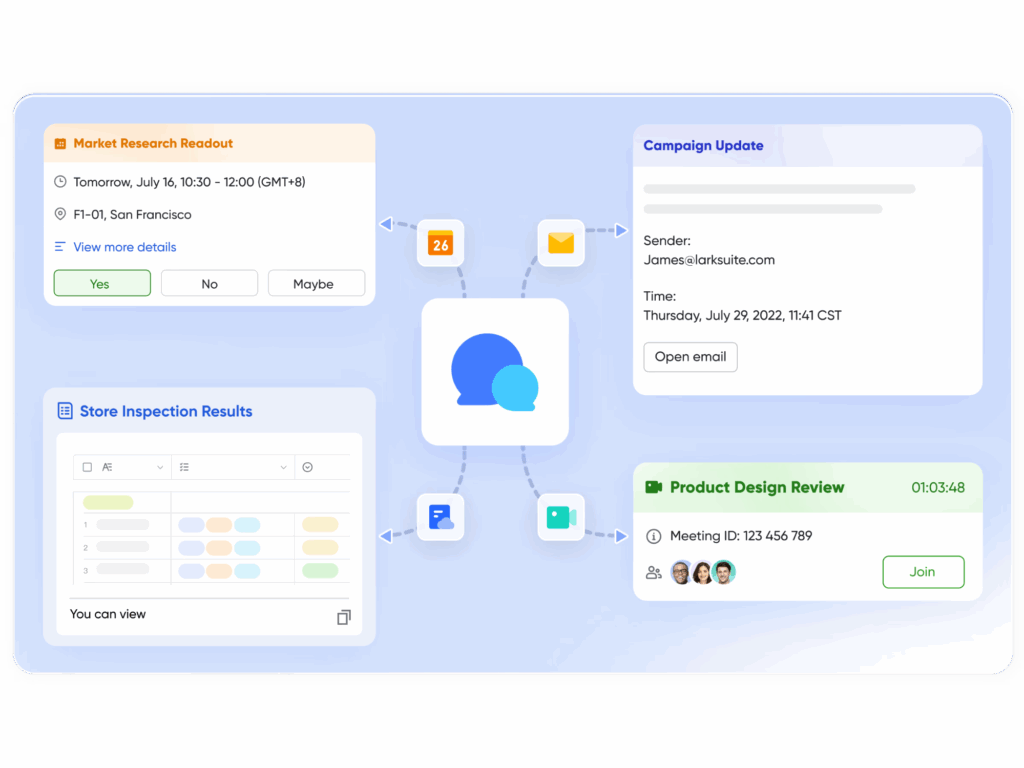
When it comes to accountability, communication plays a covert role. Communication takes place all the time in each and every project request needed for clients. When project updates or requests get lost in a chat thread, it is easy for them to be forgotten; Employees may legitimately feel that they never received an assignment and managers may assume this was plainly obvious.
Lark Messenger removes that ambiguity between communication and accountability. Messages can be pinned to emphasize them, threaded to provide context, or converted into tasks with owners and a deadline immediately, making sure that important requests do not stay as casual comments, but are turned into tracked responsibilities.. For teams, accountability no longer needs to operate solely on memory or presumption; it becomes a reinforced part of the workflow through the use of the tools that support how their teams already communicate.
Lark Docs and Wiki: preventing accountability loss from knowledge gaps
Accountability suffers when employees do not have access to the information they need to do their jobs. If guidelines, playbooks, or project details are in various locations and scattered throughout folders and emails, it may result in hesitancy for employees to have the confidence to act because they are fearful of having the wrong context. Subsequently, mistakes or miss deadlines not because they don’t want to comply but because they do not have access to relevant knowledge.
Lark Docs avoids these situations and keeps documents in a single co-editable space. The team works in one version of a file with edits and comments (which is a single version). Version history allows for accountability of edits, without confusion. Docs can work in an active collaboration mode, but can also support a Wiki view where the organization can house policies, guides for onboarding, and knowledge on various projects in a searchable library. When the right information is always at their fingertips, employees feel empowered to act with confidence—on their own terms—and in turn, greater accountability is developed throughout the team.
Lark Meetings: documenting decisions to maintain accountability
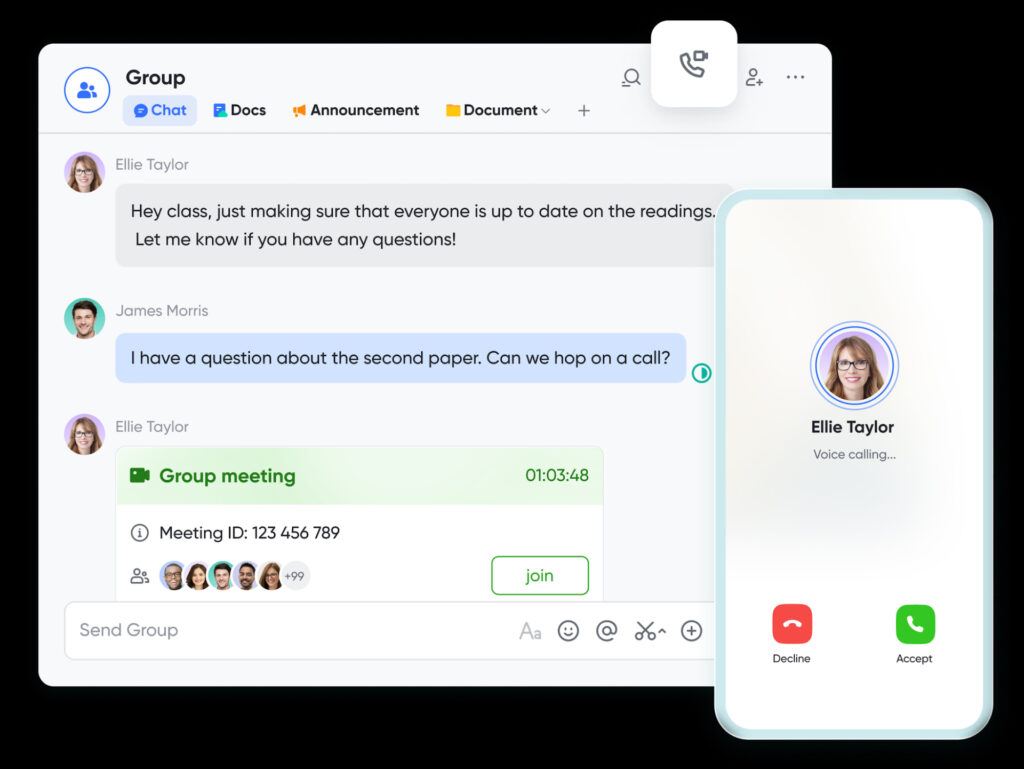
Meetings often hold the discussions that shape accountability, but without clear records, those agreements fade. Employees may leave with different interpretations of what was decided, or absent colleagues miss the context entirely. The result is recurring debates and lost accountability.
Lark Meetings prevents this by embedding documentation into the workflow. Video calls are scheduled through Calendar, hosted on the platform, and supported by AI-generated notes. These notes capture decisions, action items, and transcripts, stored automatically in Docs. Recordings can be shared in Messenger, and action items can be converted into tasks on the spot. This ensures that accountability doesn’t end with the meeting—it is preserved, visible, and actionable for everyone involved.
Conclusion
Project visibility and employee accountability are inseparable. Without clear visibility, accountability weakens, and without accountability, performance falters. Misunderstood deadlines, hidden responsibilities, scattered data, and undocumented decisions all create cracks that undermine projects.
Lark closes these cracks by embedding visibility into every aspect of the workflow. Tasks formalize ownership, Calendar aligns deadlines, Base centralizes reliable data, Messenger ties communication to outcomes, Docs and Wiki provide accessible knowledge, and Meetings document decisions. Together, these features create a transparent environment where accountability is built into the system, not enforced manually.
For organizations that want to extend this accountability beyond internal teams, connecting workflows with customer relationships is the next step. Adopting a CRM app ensures that the same visibility driving project success also supports client trust and growth. This connection makes accountability not just an internal strength but also a customer-facing advantage.



